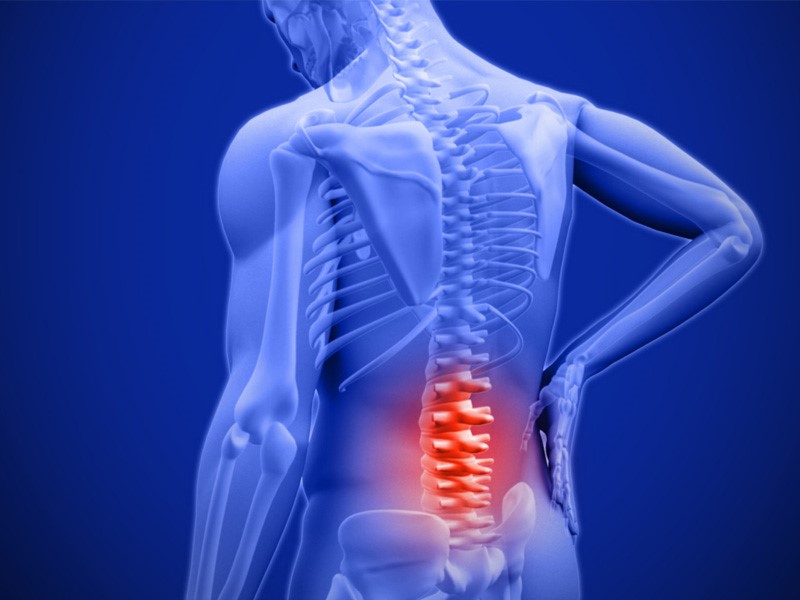Back Injuries
Back Pain
Back pain is caused by a number of different factors, but if you have pain, the cause probably fits into one or a combination of the 3 following categories:
- A ligament sprain or muscle strain
- Degenerative changes
- Discogenic pain (commonly known as “slipped disc”)
Sprain/Strain
The most common cause of back pain involves the overuse of the muscles and ligaments. Your back is a very complex and mobile structure that requires very strong muscles and ligaments to function properly. If one or a group of these structures become irritated they will send a distress signal to your brain which in turn causes the muscles to spasm as a protective mechanism.
Degenerative Changes
Degenerative disc disease (DDD) is a condition in which degenerative changes to the bony structure of your back cause pain. Like any other moving part, the joints of your back will eventually wear out. How quickly this happens depends on the density of your bones and the amount of wear and tear you expose your back to. Pain from DDD is not directly related to the bony changes or degeneration but rather the inflammation that these changes may cause. DDD related pain would often fluctuate from low level to quite serve depending on the inflammation levels.
Please note that disc degeneration is part of the natural process of aging and does not always lead to low back pain. In fact, the incidence of low back pain actually goes down as we age, despite the fact that our discs are degenerating.
Discogenic Pain
In between each bone in your back you have a disc, which is made of very thick fibrous tissue that surrounds a gel core. Pain can be caused when that gel core is pushed out of place and presses on a sensitive structure like a nerve. A disc can push out of place for a number of reasons. Sometimes it is caused by doing a lot of heavy physical labor, especially in a forward flexed position with twisting. A disc can be painful right at the place of the injury, or can cause pain to radiate down a nerve in the leg.
Treatment
A Physiotherapist will do a variety of things to help you get better, including the following:
- Provide you safe and effective treatment to help reduce pain and inflammation.
- Treatments to help loosen tight joints and muscles and ease your symptoms.
- Teach you exercises to increase your muscle strength or “core stability”, and to stretch out tight muscles.
- Give you advice on making changes to your normal activities to prevent re-injury or further irritation to your back.
- Advise you on an overall exercise program to make you more fit and strong in order to help you avoid injuring your back again.

